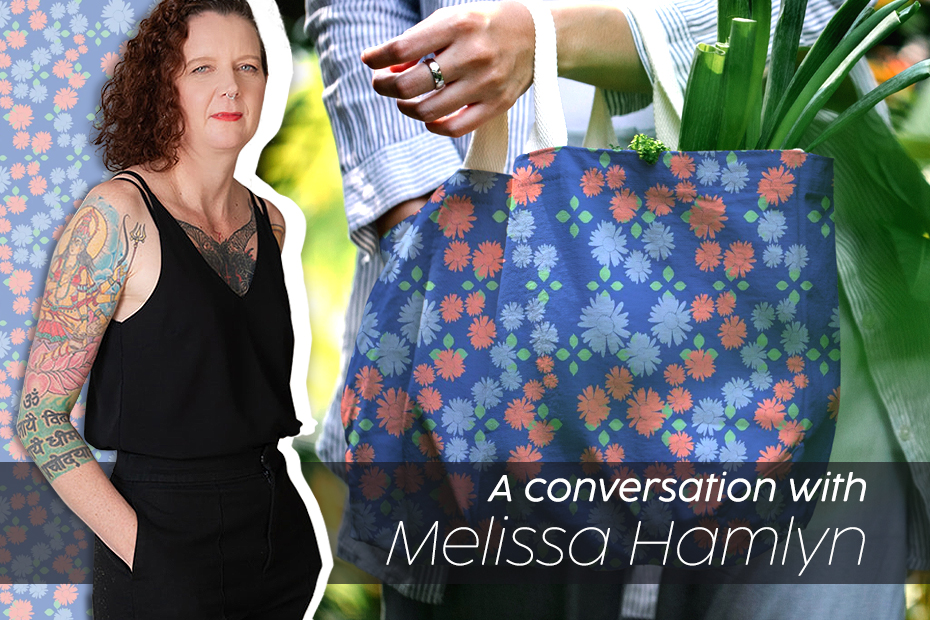Art as a career rarely follows a game-plan. That’s certainly true for artist and surface pattern designer, Melissa Hamlyn, founder of The Painted Lady Studio. In a fascinating conversation, Vieunite caught up with Melissa to discuss the importance of experience, how she fuses physical and digital media, and how mentorship from ArtShine helped facilitate her savvy career pivot into art licensing. This interview is packed with essential advice for any artist looking to professionalise their work.
Here’s Melissa’s key piece of wisdom: staying “agile” is essential for commercial success today, (and it’s important in life too!)
Melissa’s colourful, tactile work can be seen on the Vieunite art platform. Melissa explained that showcasing her art on a digital art canvas makes it more dynamic and alters how viewers perceive it, providing a novel platform for art conversations. As a global platform, Vieunite enables creatives like Melissa to showcase their work, preserve their collections, and connect authentically with a broader, supportive audience. Incidentally, her creative identity, “The Painted Lady Studio,” has a charming origin story: it began as a nickname given to her in a rural English pub due to her tattoos, a memorable moniker she later adopted for her artistic output.
Drawing inspiration for her designs from her remarkable personal history, Melissa’s global travels, including stints in tropical Australia, rural England, and an art residency in Goa, have profoundly influenced her work. However, Melissa is quick to point out that inspiration is everywhere, advising aspiring artists to be a “sponge” and draw from daily life, observing the so-called “mundane” just as closely as grand adventures.
“You’ve got to be a sponge as an artist. You’ve got to be able to draw the world into you… before you can use it in your practice.”
That blend of experience is mirrored in Melissa’s creative process, which is itself a unique fusion of traditional and digital. Her work often starts with sketches, paint, and collage before scanning and refining the artwork in Photoshop, where she manipulates elements like composition and opacity. This blend allows her to easily create different “colourways” of a single design, tailoring the mood of the work to different settings. This simple process enables her to maximise the number of places her art can go, and so increase opportunities for licensing revenue.
Melissa believes that taking creative risks and moving outside your comfort zone is essential for personal and professional growth. This is reflected in her deep respect for the pioneering nineteenth century Swedish abstract artist Hilma af Klint. In our interview, she noted that af Klint’s esoteric approach and connection to the spiritual world pre-dated better-known male abstract artists, affirming the historical significance of intuition in art.
She confidently advises other artists that they can remain true to their creative vision even while successfully pursuing business opportunities, trusting their instincts and always moving forward.
“I’m getting more confident now that I can move into… a more sort of business or commercial space and still remain true to my creative ideas and what I like to do.”
To hear more about Melissa’s advice for artists, her inspirations, process, and creative philosophy, watch the full interview below.

Vieunite’s mission is to provide a new online art community that combines an alternative platform for artists to sell their work digitally with an innovate digital canvas that has texture accurate display technology. We want to bring art into everyone’s lives in a unique way to give people the chance to creatively express themselves.
